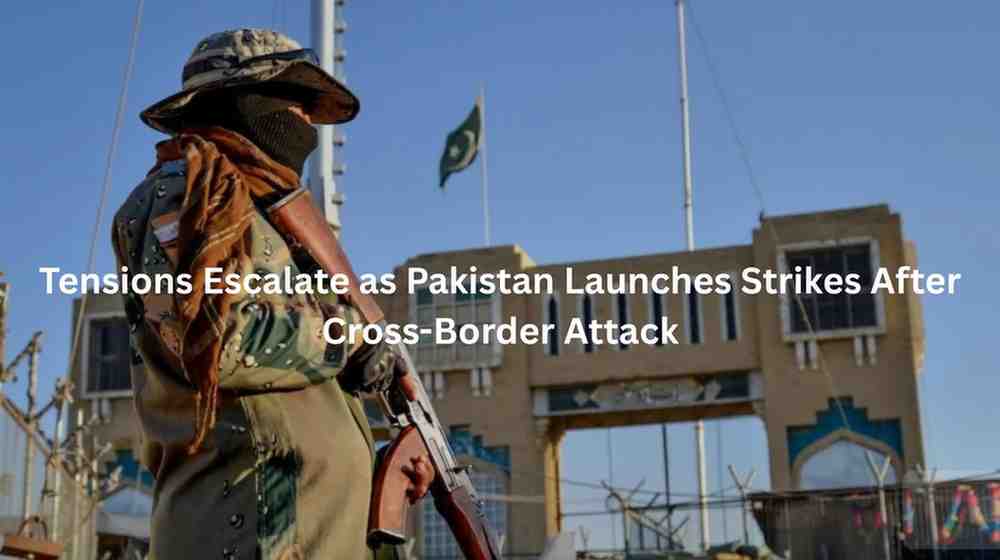Pakistan–Afghanistan Tensions Rise Again as Fragile Truce Extends Amid Fresh Strikes

Doha offers to host mediation talks as both nations exchange blame and bombs along the Durand Line.
The already fragile relationship between Pakistan and Afghanistan has taken another violent turn, as border skirmishes and air raids shatter hopes of peace despite a temporary ceasefire. What began as a 48-hour extension to cool down tensions has instead turned into one of the bloodiest flare-ups since 2021, leaving dozens dead and hundreds injured.
The ceasefire, agreed upon after several days of heavy cross-border fighting, was supposed to prevent further loss of life. Yet within hours of renewal, gunfire and explosions again echoed across the Durand Line, underscoring the volatility of one of the most sensitive borders in South Asia.
Pakistan’s Airstrikes Deepen the Crisis
Reports from southeastern Afghanistan’s Paktika province indicate that Pakistani airstrikes hit residential zones near the border late Wednesday night. Local Afghan officials said bombs struck homes in Khanadar village, killing at least 10 civilians, including women and children. Hospitals in the region reported a wave of injured civilians, many suffering from shrapnel wounds.
Islamabad has not commented on these specific strikes but insists that its military operations are targeted counter-terror actions against Tehreek-e-Taliban Pakistan (TTP) militants, who it claims operate from Afghan soil with tacit Taliban support.
Retaliation After Deadly Car Bomb in Pakistan
The air raids came in response to a suicide car bombing in North Waziristan’s Mir Ali area, a volatile region of Khyber Pakhtunkhwa province. Pakistani intelligence officials said the assault was orchestrated by TTP fighters, targeting a security forces compound.
Confusion clouds the actual death toll:
- Some Pakistani government sources downplayed the attack, saying three militants were killed and no soldiers died.
- Reuters, citing defense insiders, reported seven soldiers dead and at least 13 wounded.
- Geo News stated that four TTP attackers were neutralized with no Pakistani casualties.
The conflicting accounts highlight the “fog of war” — where truth becomes one more casualty amid propaganda and chaos.
The Worst Border Violence Since the Taliban Takeover
These confrontations are being called the most intense since 2021, when the Taliban regained power in Kabul following the U.S. and NATO withdrawal. Since then, Pakistan has accused the Taliban regime of turning a blind eye to TTP safe havens in eastern Afghanistan.
The Taliban government, however, fiercely rejects these claims. Afghan spokespersons allege that Islamabad’s airstrikes violate sovereignty, and accuse Pakistan of spreading misinformation to justify cross-border aggression.
“Pakistan’s accusations are baseless,” said a Taliban foreign ministry official in Kabul. “They must stop violating Afghan territory and respect international norms.”
Hope From Doha: Qatar Steps Up for Peace Mediation
As violence flared, Qatar — already a key diplomatic player in regional affairs — has reportedly offered to host peace talks between the two nations in Doha. Though neither Islamabad nor Kabul has formally confirmed participation, diplomatic channels indicate that “friendly countries” are pushing hard for negotiations to prevent the crisis from spiraling.
A senior official in Doha said, “The goal is to bring both sides to the table before this limited ceasefire collapses completely.”
Al Jazeera correspondent Kamal Hyder, reporting from Peshawar, described the situation as “extremely tense,” warning that any miscalculation or fresh provocation could reignite full-scale hostilities.
Civilians Pay the Heaviest Price
As usual, civilians are bearing the brunt of the conflict. According to the United Nations Assistance Mission in Afghanistan (UNAMA), 37 Afghan civilians have been killed and over 425 injured in just one week of cross-border violence.
In Pakistan, the Inter-Services Public Relations (ISPR) reported killing 34 TTP militants, whom it described as “India-backed terrorists,” during operations across Khyber Pakhtunkhwa. Pakistan’s military now labels the group as “Fitna-al-Khawarij”, reflecting its stance that the TTP are religious extremists destabilizing the region.
However, independent observers warn that such operations risk fueling further radicalization in both countries — where instability, poverty, and displacement are already widespread.
Analysts across South and Central Asia are sounding alarms that the Pakistan–Afghanistan tensions could spill over, disrupting the delicate balance in the wider region. The fear is that chaos could create a vacuum for extremist outfits like ISIL (ISIS) and al-Qaeda to regroup in the border areas, reversing years of counter-terrorism progress.
With both governments under pressure — Islamabad battling internal political turmoil and Kabul struggling for international legitimacy — the path ahead looks perilous.
For now, the truce holds by a thread. As the 48-hour ceasefire window ticks away, the choice remains stark: diplomacy or destruction.